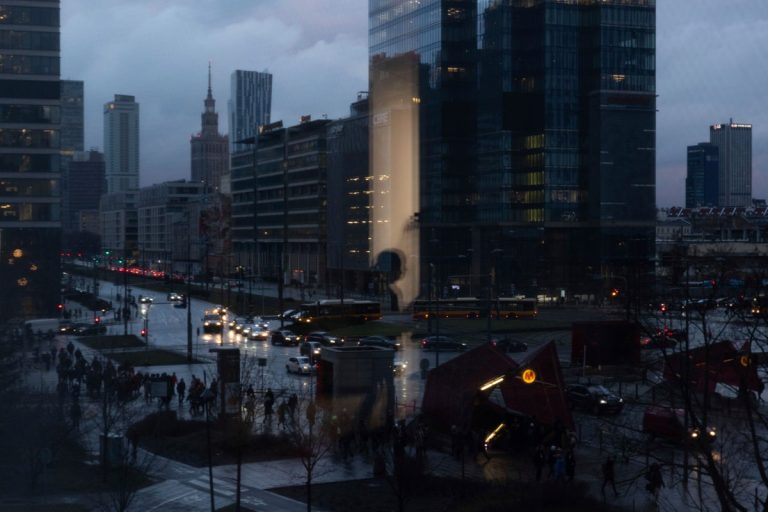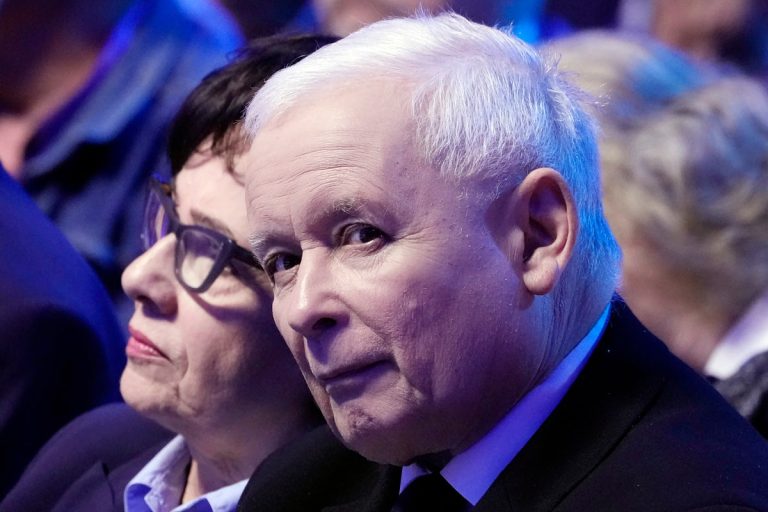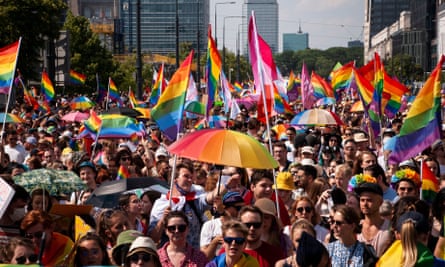‘An anti-European manifesto’: Poland’s Venice Biennale entry defies inclusive theme | Poland
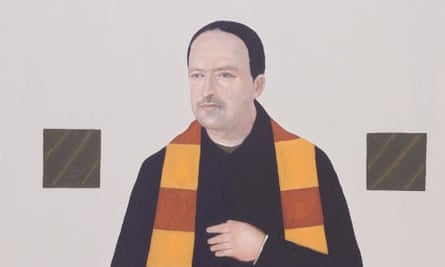
When the Venice Biennale opens to the public next April, exhibitions at the 29 national pavilions are expected to blur cultural boundaries more than ever before. Curators say the 60th iteration of the world’s largest contemporary art event, entitled “Foreigners Everywhere”, will be a celebration of migration and non-belonging.
The Polish pavilion, however, will play to a different tune – one straight out of the playbook of the nationalist-populist Law and Justice party (PiS) that has ruled the country since 2018.
After the recent election, it is expected the PiS will be out of office by the time the Biennale opens. Its pavilion, then, comes across as a parting shot in the culture wars that have raged during its time in power. One critical curator has described it as the “end game of eight years of rightwing rule”.
Featuring more than 35 works by the artist Ignacy Czwartos, the exhibition will paint a picture of a Polish state victimised throughout the 20th century at the hands of its neighbours Germany and Russia. According to an outline of the show, one as-yet-unfinished painting, called Nord Stream 2, will show the former German chancellor Angela Merkel and Russia’s Vladimir Putin connected by a flaming St Andrew’s cross that forms a swastika.
A long wall facing the pavilion’s entrance will be hung with seven canvases depicting Poland’s “cursed soldiers” – anti-communist Polish resistance fighters from the later stages of the second world war whom the PiS has sought to rehabilitate from allegations of war crimes.
In a room dotted with devotional figures on pedestals, other paintings are designed to draw connections between the military arm of Hitler’s private army, the Waffen-SS, and the late Russian mercenary leader Yevgeny Prigozhin, as well as between the Holocaust and the Smolensk air disaster of 2010 in which the Polish president and PiS co-founder Lech Kaczyński died.
The outline document casts the show as a unique opportunity to draw international attention to what the curators perceive as Poland’s uniquely tragic plight. “The Greeks invented tragedy”, it says, “the Poles rehearsed it.” Called “Polish Exercises in the Tragedy of the World: Between Germany and Russia”, Poland’s submission to the biennale was announced by the PiS government’s culture minister, Piotr Gliński, on 31 October.
Ignacy Czwartos often paints himself wearing the colours of the football team he supports, Korona Kielce. Photograph: Zachęta national art gallery
Karolina Plinta, a deputy co-editor of the Polish art magazine Szum, said: “Czwartos’s paintings are an eclectic mix of everything that will please the conservative imagination. If his show goes ahead as planned, the Polish pavilion will amount to an anti-Russian but also an anti-European manifesto.”
In an unusual step, three members of the jury that selected the show filed a dissenting opinion, noting that Czwartos’s exhibition clashed heavily with the official theme of the biennale. In its protest note, the three female jury members said the pavilion presented Poland as a “homogeneous, unopen country focused only on itself and on speaking from the position of a victim” and that it “does not in any way reflect Poland’s contemporary art scene”.
Born in 1966, Czwartos was not considered a major player in the Polish art scene before he was embraced by PiS. A fervent supporter of the Polish top-flight football club Korona Kielce, the 57-year-old often paints self-portraits in which he is wearing shirts or scarves in their red and yellow colours.
Referencing baroque-era portraiture but also modernist artists such as Mark Rothko and Kazimir Malevich, his poster-like paintings are not overtly traditionalist in style.
Thematically, however, Czwartos’s paintings align strongly with the preoccupations of Poland’s rightwing government, mingling religious iconography with military commanders from the second world war and more recent events in Polish history.
A show at the Zachęta national art gallery in Warsaw this summer presented Czwartos’s “cursed soldiers” paintings, including several portraits of Zygmunt Szendzielarz, the commander of the Polish 5th Wilno Brigade of the Home Army that in 1944 oversaw a massacre of Lithuanian civilians that contemporary historians describe as a war crime.
A spokesperson for the Lithuanian foreign ministry said it would not comment on a piece of art before it was put on display. “Even if the piece of art is going to present disputed interpretation of historic facts or figures of our common history, the discussion about it should be going among historians and art critics first,” the spokesperson said.
The German foreign ministry also declined to comment on the reported content of the Polish pavilion.
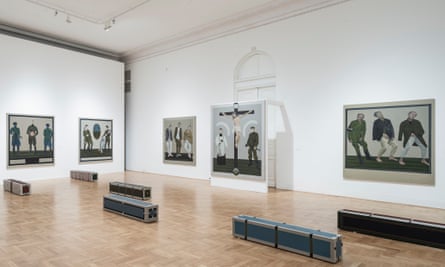 Czwartos’s paintings mingle religious iconography with military commanders from the second world war and more recent events in Polish history. Photograph: Juliusz Sokołowski
Czwartos’s paintings mingle religious iconography with military commanders from the second world war and more recent events in Polish history. Photograph: Juliusz Sokołowski
At the last biennale, in 2022, Poland was represented
by Małgorzata Mirga-Tas, a member of Poland’s Bergitka Roma community. Shortly after Mirga-Tas’s nomination was announced, the government dismissed the director of the Zachęta gallery, which oversees the pavilion’s curation, and replaced her with the painter and trade union leader Janusz Janowski.
Ahead of the 2024 biennale, the rules of the selection process were changed, with proposals for the pavilion presented to a jury in a form that anonymised the name of the artist. The 15-member jury included several people from outside the art world, some of whom were reportedly unfamiliar with the fact that countries fund their own national pavilions at the event.
Whether PiS will still be in power by the time the Polish pavilion opens to the public is unclear. The party, led by Jarosław Kaczyński, won the most votes at national elections in mid-October and was this week given a first chance to form a coalition with a governing majority.
However, a broad coalition of opposition forces led by the former European Council president Donald Tusk have said they are ready and willing to form a government if PiS fails to do so, as is expected.
“To us the decision to select Ignacy Czwartos seems like the end game of eight years of rightwing rule”, said Joanna Warsza, a co-curator of Poland’s 2022 pavilion who, along with the Museum of Warsaw director Karolina Ziębińska-Lewandowska and the critic and curator Jagna Domżalska, was one of the three dissenting voices on this year’s jury.
She said: “What makes it even more tragic is that it is happening now when there is finally some optimism in Poland after the elections.”
By next spring, the Polish pavilion’s nation-centred presentation may well look like a glimpse of the Venice Biennale’s future, however. Pietrangelo Buttafuoco, a journalist closely affiliated with Italy’s right, has been nominated to take over from the festival’s outgoing president, Roberto Cicutto, and could be appointed by Italy’s chamber and senate on 14 November.




